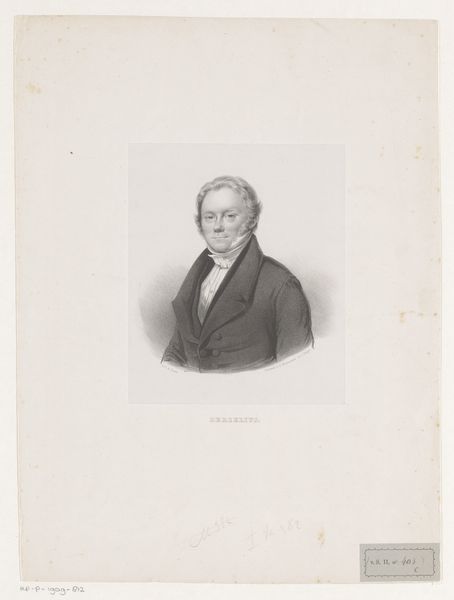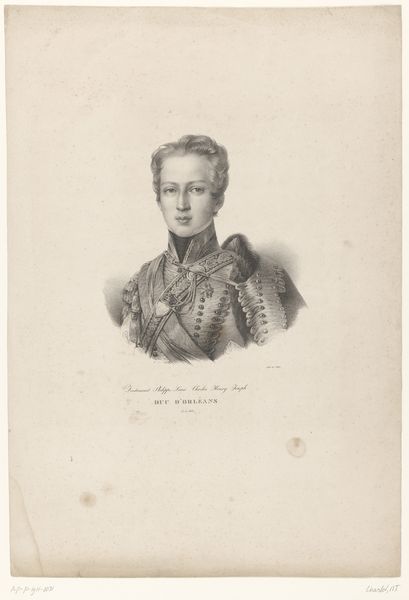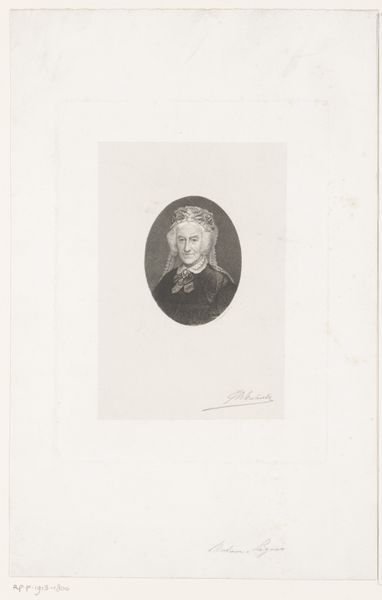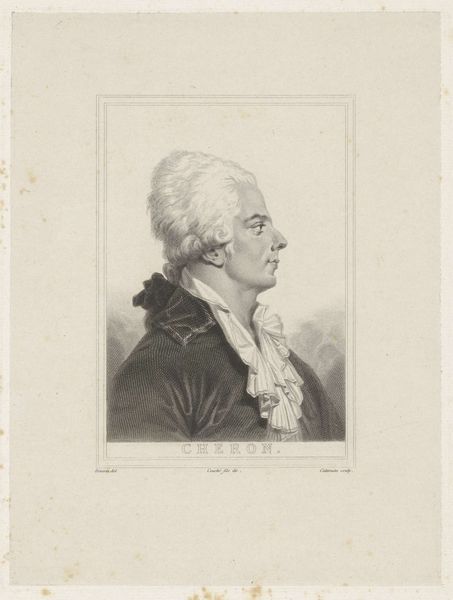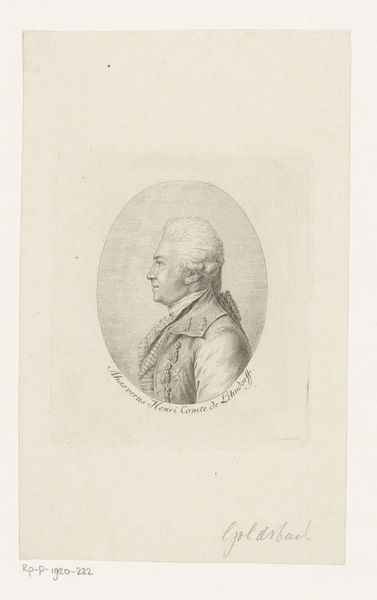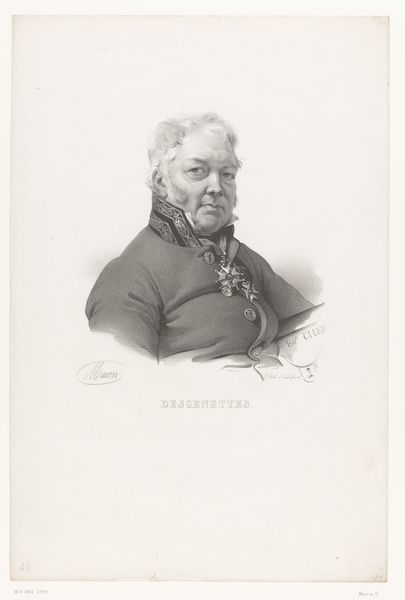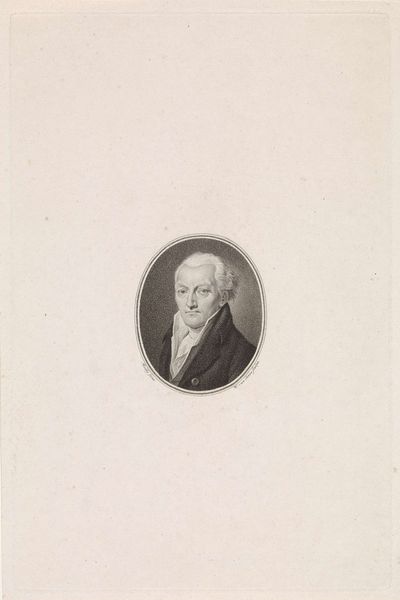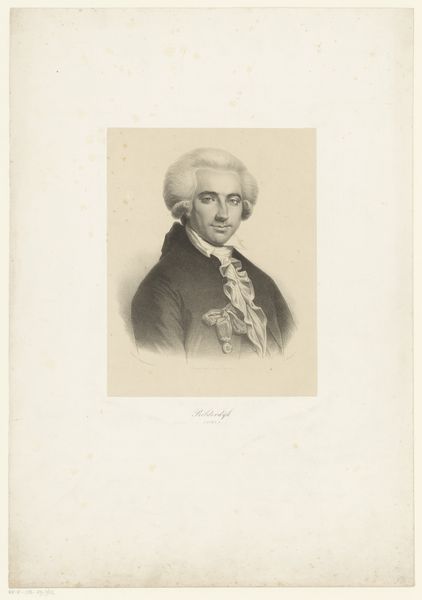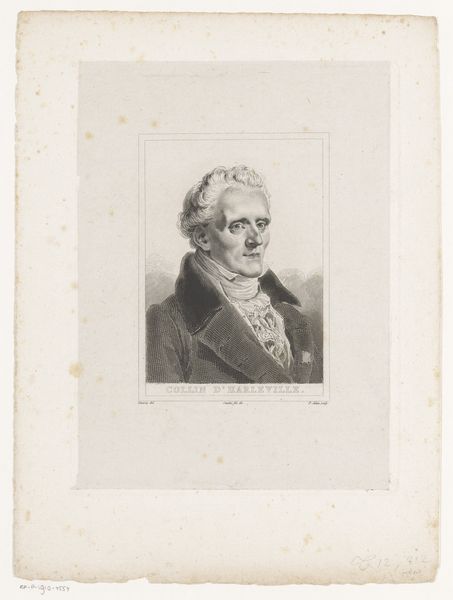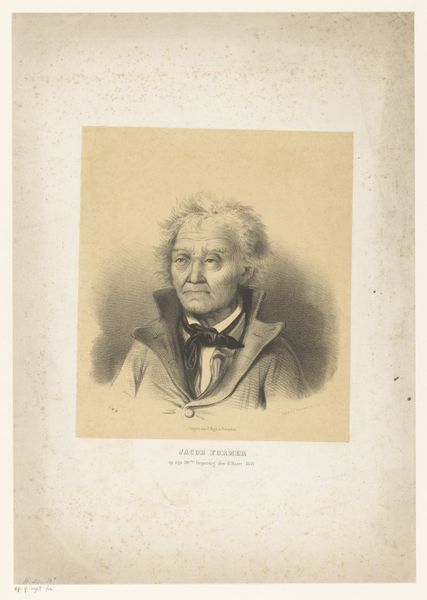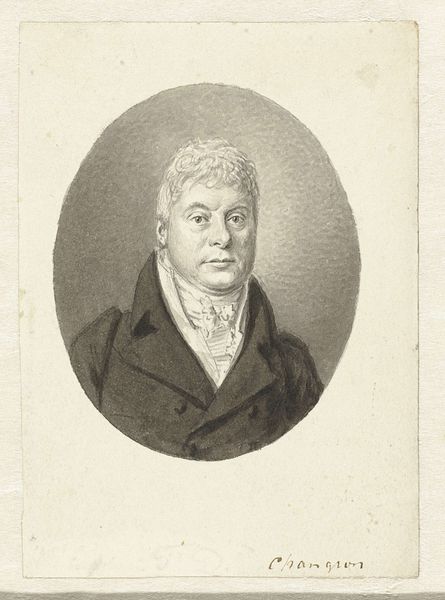
Dimensions: height 259 mm, width 177 mm
Copyright: Rijks Museum: Open Domain
Curator: Looking at this rather stately image, we have before us a work called “Portret van Joseph Jérôme Siméon,” created around 1853 by Alphonse Farcy. It appears to be an engraving, derived from a pencil drawing. Editor: My first impression is one of formality and perhaps a touch of old-world power. The stark contrast between the figure and the background draws the eye directly to the man and his elaborate attire. Curator: Absolutely. The image presents an interesting study in societal structures. Joseph Jérôme Siméon was, of course, a prominent figure, and portraits like this served a vital function. How did public figures construct and disseminate their images? How do class structures influence depictions of self and identity? We might view Siméon’s formal attire as a constructed presentation of status. Editor: That's insightful. The piece feels rooted in its specific historical context. I am curious, what would such a drawing signify in mid-19th-century France? This was an era of revolutions and shifting social structures, but it seems images like these continued to function as symbols of power. This engraving could reproduce his features and spread that image for all to see. I would like to know who this was intended for, who produced this? The politics of imagery can also speak to a certain audience of people who might hold more influence or financial power. Curator: Precisely. And consider the artistic choices as reflections of those dynamics. Realism combines with romanticism in that costume, and how carefully rendered and displayed that coat is. It speaks to a negotiation between accuracy and idealization. I see it also speaking of shifting power structures and a visual assertion of legitimacy. Editor: And even now, in our contemporary context, that sort of historical image affects viewers. Consider who is often displayed in institutions today: it often perpetuates cycles of exclusivity and hierarchy. Curator: It's true. This single portrait encourages reflection about portraiture itself: as an art form entwined with power, identity, and social change, it also speaks about visibility, both who creates and consumes those visuals. Thank you for helping open my eyes. Editor: The pleasure was all mine, helping contextualize visual power is such a great pleasure for me too.
Comments
No comments
Be the first to comment and join the conversation on the ultimate creative platform.


